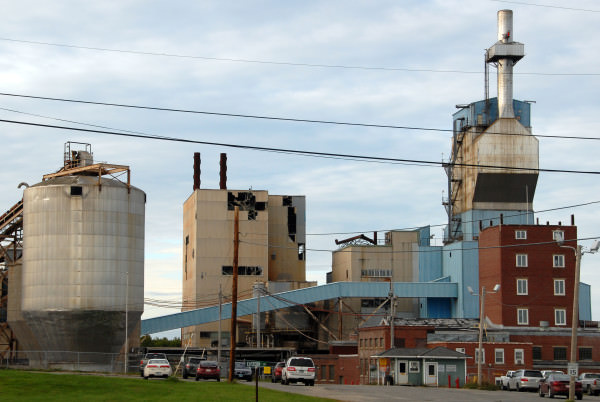BANGOR, Maine — A federal agency has settled its $5 million civil lawsuit against Lincoln Paper and Tissue LLC by agreeing to seek restitution for a lesser amount when claims filed by unsecured creditors against the bankrupt mill’s estate are processed, officials said Monday.
The Federal Energy Regulatory Commission agreed as part of the deal to place its claim for $379,016 in profits that FERC claims Lincoln Paper and Tissue illegally received in 2008 among other unsecured claims that came after the mill’s bankruptcy in 2015, according to a 12-page filing released by the U.S. Bankruptcy Court in Bangor on Monday.
Those unsecured claims, which at one point totaled $9.1 million, are still being negotiated by the estate as part of a liquidation plan, Lincoln Paper and Tissue LLC attorney D. Sam Anderson said. The plan will take several months to negotiate, he said.
Jay Gellar, the attorney representing unsecured creditors, said it is impossible to tell at this point how much money the unsecured creditors might get from the estate.
“It is so premature right now to predict that because there have been some massive claims filed,” Gellar said Monday.
Under the deal, the $5 million penalty FERC sought for Lincoln Paper and Tissue’s alleged violation will be subordinated to the unsecured claims — an important step, Anderson and Gellar said, toward helping the creditors get more money from the estate. Because it is subordinated, FERC’s penalty settlement won’t be sought until the unsecured creditors have settled their claims.
Also as part of the deal, the $379,016 claim will be paid at the same percentage rate when all other allowed general unsecured claims are settled, the 12-page document states. Unsecured claims typically are paid at a fraction, or a percentage, of what is originally owed.
As part of the settlement, the mill’s leadership confirms the facts within but “neither admits nor denies the [alleged] violations” that compelled FERC’s lawsuit in July 2012, the document states.
FERC alleged that Lincoln Paper manipulated a demand-response program administered by ISO-New England that paid end users to reduce their electricity consumption during peak hours.
FERC alleged that Lincoln Paper and Tissue manipulated the demand-response program by establishing “a false baseline to create the illusion” that the end user was reducing its consumption of electricity. That, in turn, allowed the end user “to extract payments for phantom load reductions,” according to the lawsuit.
Lincoln Paper and Tissue officials and their consultants denied the allegations. They filed motions seeking that the case should be dismissed because FERC did not provide fair notice or enough specificity in its charges and that the penalty is beyond the statute of limitations and outside the commission’s jurisdiction.
That federal lawsuit was pending when the paper mill filed for Chapter 11 bankruptcy protection in September 2015, eventually laying off 128 workers employed there at the time. Lincoln Paper and Tissue sought bankruptcy after a boiler explosion in November 2013 left the mill leaking cash. Lincoln Paper had employed close to 300 workers at one point.
FERC had filed two similar complaints against Rumford Paper Co. and the Portland-based consultant Competitive Energy Services alongside the Lincoln lawsuit. Rumford settled the claims for $3 million in 2013. Claims against Competitive Energy Services and its owner Richard Silkman were transferred in April from a federal court in Massachusetts to U.S. District Court in Maine. That case is in the discovery phase, to establish the record of evidence for the case should it continue to trial.
BDN writer Darren Fishell contributed to this report.
Source: bangordailynews.com





Be the first to comment on "FERC, Lincoln Paper and Tissue Estate Settle $5 Million Lawsuit"